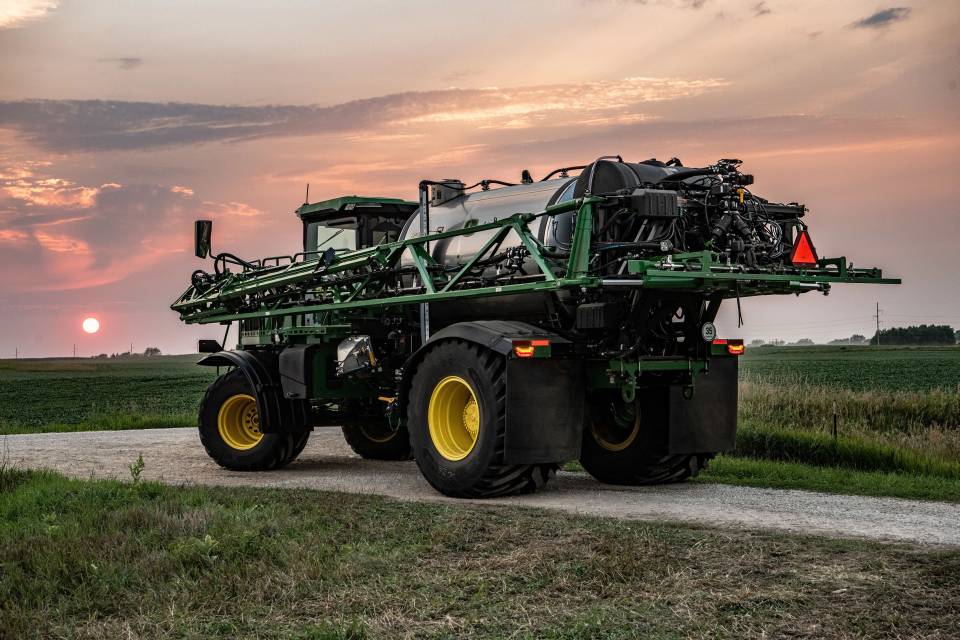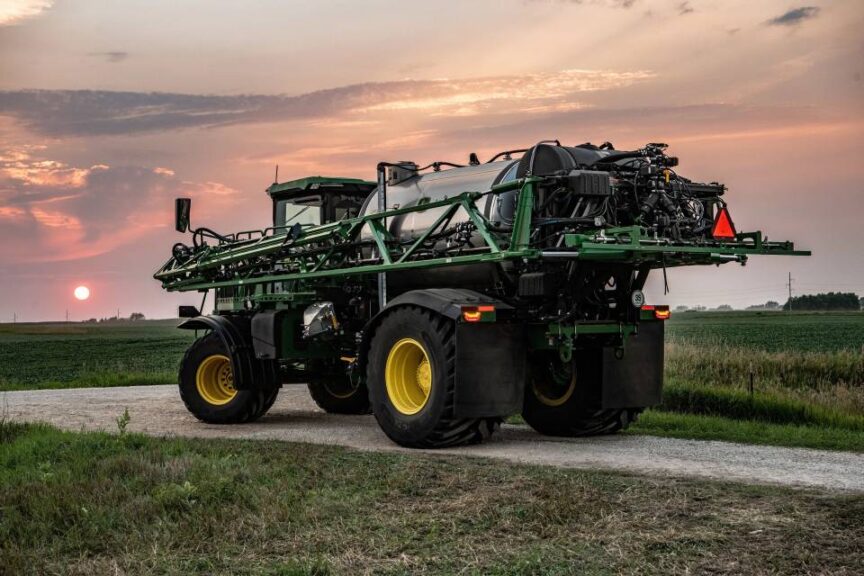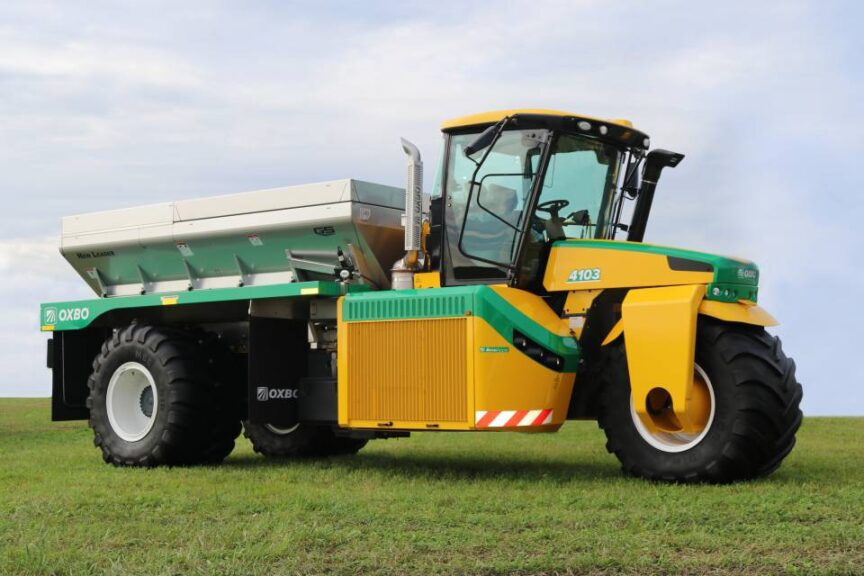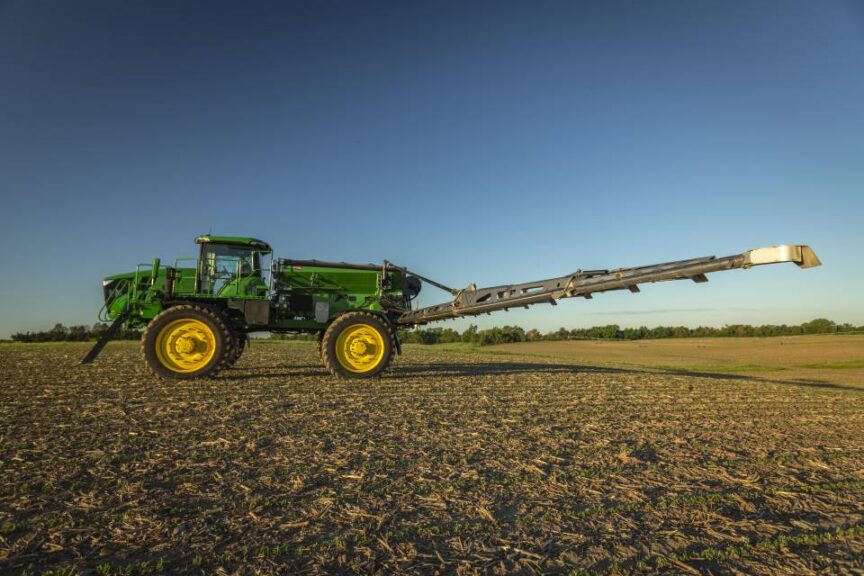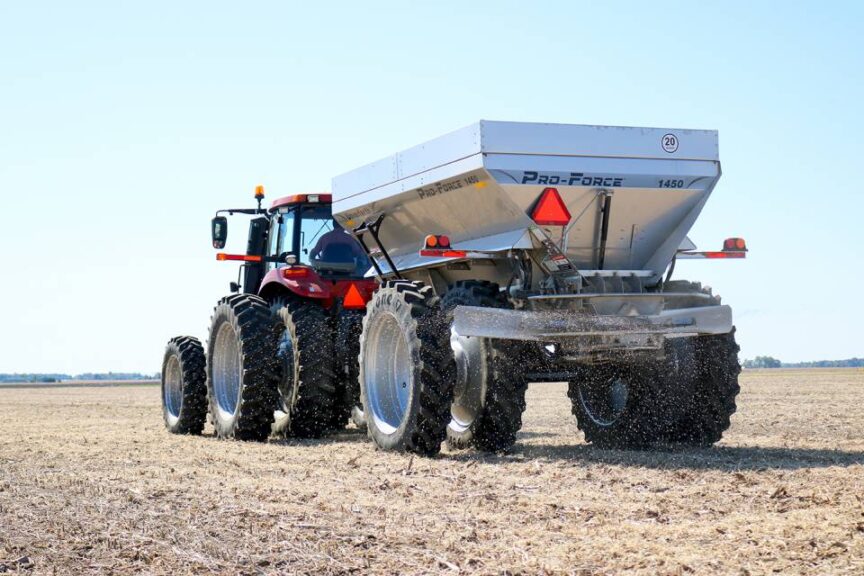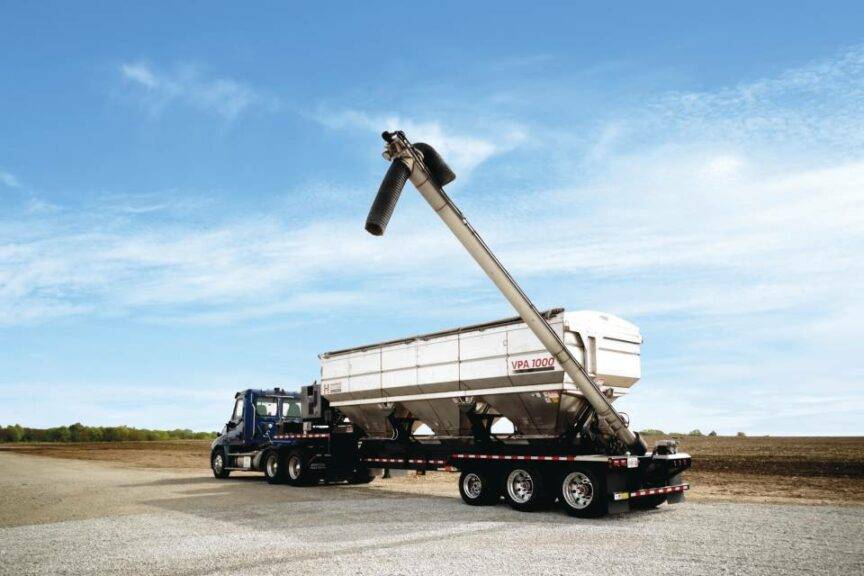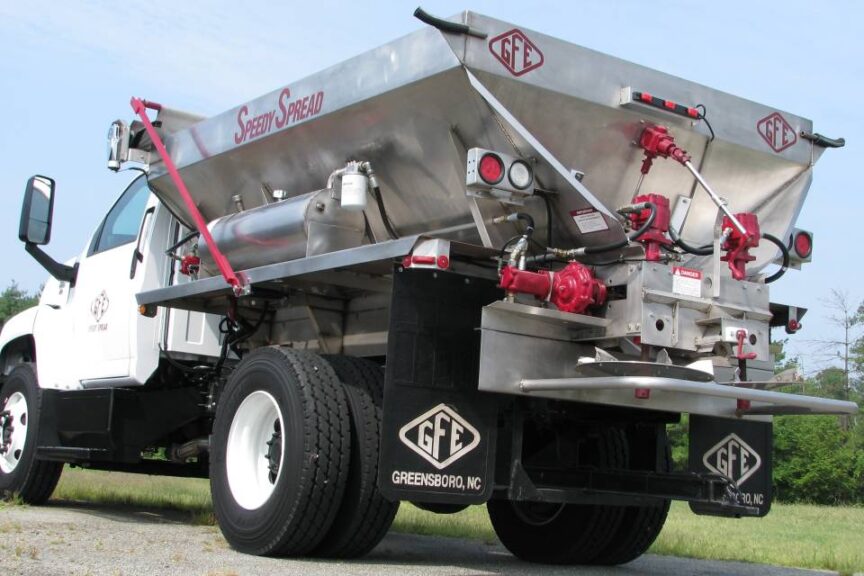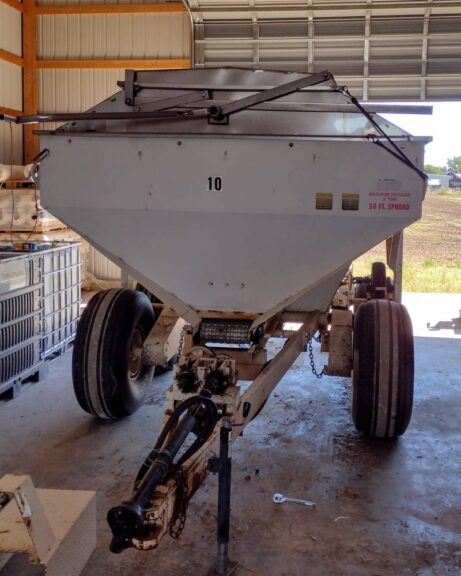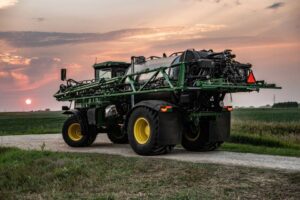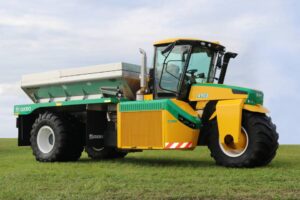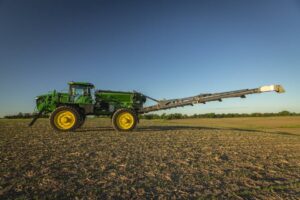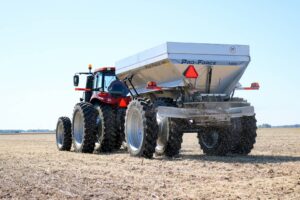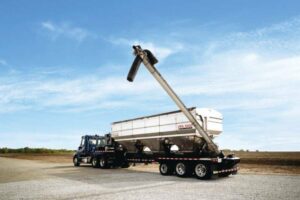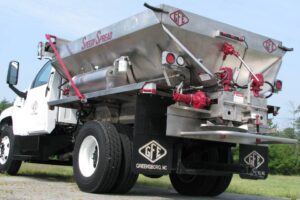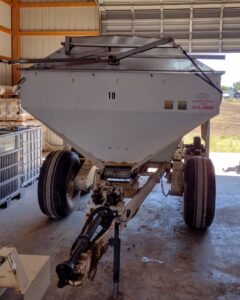Fertilizer Spreader Manufacturers Thrive During a Challenging Year
Fertilizer spreader manufacturers use several words to describe 2021. None of them are “normal.”
“Very busy and challenging,” responds Jon Simonsen, General Manager, Simonsen Industries, when asked how he would characterize the company ’s year.
“Wild,” says Mark Magee, Nutrient and Commercial Application Specialist, Salford Group. “A surge in demand combined with supply chain challenges, material price issues, logistical challenges, labor shortages, and COVID-19 complications stretched people to their limit. In spite of this, we managed to do very well.”
Like the Salford Group, John Deere has learned that a challenging market isn’t necessarily a bad market.
“2021 has been a dynamic year in the ag industry; we are experiencing robust equipment demand led by strong commodity prices, but manufacturers are experiencing logistical and supplier constraints that have created delivery delays and production limits,” says Franklin Peitz, Deere’s Marketing Manager.
Business interruptions related to COVID-19 related make one wonder how sales might have looked in a “normal” year.
“2021 has been a year of success and growth with many challenges,” says John Rathjen, Director of Strategic Partnerships, at New Leader Manufacturing (NLM). “COVID-19, employee shortages due to low unemployment rates in our area, and supply chain shortages have posed many challenges for NLM.”
Oxbo International has had to deal with similar issues. “Overall, it’s been a very good year but also challenging,” says Doug Gamm, Commercial Director. “Dealing with supply chain issues, extended lead times for components and cost increases has made it difficult to provide equipment and services to our customers.”
While sales haven’t suffered, manufacturers have dealt some with hiccups.
“2021 has been a rough year on a lot of ag equipment manufacturers, and we are no different. Higher costs on all materials and less sales because of it,” says Bill Soles, General Manager, Auto Trac Inc./Topps Manufacturing. “2020 even with the pandemic was one of our best years for sales.”
Sourcing issues have been (and for the time continue to be) a universal concern among manufacturers.
“Like other industries, we saw production and parts challenges due to the pandemic, which made things interesting at times,” says Craig Jorgensen, Application Account Manager, AGCO Corp. “But we were able to pivot around most of those issues and keep farmers and operators in the fields. We’re optimistic about the coming years. Higher commodity prices and a fleet that’s as old as it’s ever been in North America are building demand for newer and smarter application solutions.”
And no matter what else is going on in the country, when it comes to agriculture, the weather impacts the entire supply chain.
“Strong commodity prices have helped contribute to the majority of retailers having a great spring and upcoming fall season, says Arnie Sinclair, President, Heartland Ag Systems.
Even with a positive sales season, manufacturers have had to make some adjustments.
“2021 has been a very good year even with all the uncertainty surrounding the COVID-19 pandemic,” says Shane Spike, President, General Fertilizer Equipment Inc.
While manufacturers have adjusted to the disruptions, looking ahead might require just as much maneuvering to ensure 2022 is just as successful.”
GVM Inc. is looking for a positive 2022 with the introduction of several new spreaders to the company’s portfolio. “It was a very good season for our first full year producing our new Double Duty line,” says Mark Anderson, Owner and President.
Given the disruptions the pandemic has posed and the unknown effects its continuation will have on the industry, it’s little wonder there is some trepidation about heading into 2022.
“2021 was a unique year in that commodity prices have bounced back, but the major disruption in the supply chain is causing product shortages and increased prices for materials,” says Andy Unverferth, Marketing Manager, Unverferth. “Overall, 2021 seemed to be a very positive year for the agricultural industry but if we cannot correct the supply chain issues, 2022 holds a lot of unknowns.”
Trending
“Customers continue to look for value for their dollars spent. Customers are not afraid to spend more money to maximize value,” Simonsen says.
With just about all purchases, it comes down to return on investment.
“Customers continue to want to do more with less; this means: Cover more acres per day with less labor and equipment,” NLM’s Rathjen says. “They want machines to travel faster, spread at higher rates with wider swath widths, and be very reliable.”
General Fertilizer Equipment’s Spike says the latest technology can help realize that ROI.
“Technology is the one thing that is continually evolving in the ag industry,” he says. “Ag customers can’t seem to get enough of the technology.”
In other words, versatility and adaptability are keys.
“Growers and retailers are increasingly looking for more versatile machines that can be used throughout the growing season for greater flexibility and return on investment,” AGCO’s Jorgensen says. “A great example of this trend are row crop chassis that are adaptable to accommodate dry spread systems, which allows sprayers to convert to dry spreaders for in-crop fertilizer applications or postharvest applications.”
It’s not enough to deliver efficiency, Deere’s Peitz says. End users are looking for more productive machines that are easy and comfortable to operate.
“Deere’s solution, Peitz says, “whether an operator is jumping into a John Deere Floater, tractor (anhydrous rig, John Deere, or Hagie Sprayer) the operation is a common experience.”
According to Salford Group’s Magee, “Along with greater working widths and higher capacities, multi-product applicators are a key demand from customers. Micronutrient hoppers are a key demand that Salford has been able to incorporate into several of our applicators.”
COVID-19 is not the only factor affecting change.
“In some areas, government regulations are only allowing nutrient application in the spring of the year before planting,” NLM’s Rathjen says. “This creates a challenge for applicators to get all products spread in a very short window. This also has created higher rates of application to get all the materials they need spread in one pass instead of application in the fall and then a lighter one in the spring.”
According to Oxbo’s Gamm customers have been asking for, “more technology, more productivity, less field compaction.”
Challenges
“High commodity prices have driven record purchases throughout the ag industry, but industries are extremely challenged with hiring needs, employee health, and supply chain fulfillment,” NLM’s Rathjen says. “I have never seen so many obstacles in manufacturing product as we have seen in 2021.”
One of the biggest obstacles is managing the supply chain.
“Short-term challenges we will face are supply chain issues, and labor shortages,” Sinclair says. “Finding qualified individuals to meet increased demand in manufacturing will be a large challenge Heartland AG Systems and other businesses will face. In addition, the challenge of offering the technology that is desired at a feasible cost to customers. Customers need to be able to show a return on investment of the technologies they are requesting, and in some cases, they may have to hire custom applicators with equipment already having that technology on hand.”
According to Deere’s Peitz, there are some challenges the industry must overcome or at least come to grips with: Labor, safety, and regulation (i.e., fertilizer in watershed), continued productivity, and precise placement through enabled technology.
It seems no matter who is discussing the topic there are two concerns that come up repeatedly.
“This year has seen commodity prices jump upward compared to years past, but the COVID-19 pandemic has left major holes in the supply chain,” Unverferth’s Andy Unverferth says. “There is also a shortage of labor available. The combination of supply chain distress and a shortage of labor created challenges in the agricultural industry when it comes to getting machinery, chemical, fertilizer, and other inputs.”
Opportunities
“(We need) to adapt and incorporate the new technologies on current and new product offerings,” Heartland Ag’s Sinclair says. “How will autonomous equipment impact demand? Will the autonomous equipment be affordable, and will state requirements of having a certified applicator operating the vehicle when applying crop protection products be allowed?”
For New Leader, it’s about delivering on the promises technology offers.
“Product support and wider spread patterns are huge opportunities in the future,” Rathjen says.
At Deere, opportunities include “leveraging proven technology that have helped customers increase productivity and provided cost effective savings from the sprayer product line and leverage it on the floater product line; continuing to meet unique customer needs and integrate Deere features and benefits to provide green on green solutions; and providing more data to customers and retailers to enable data driven customers for each business and operation,” Peitz says.

